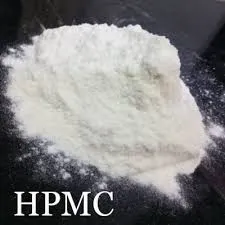
ഒക്ട് . 11, 2024 12:49 Back to list
Hydroxyethyl Cellulose Production Techniques and Manufacturing Guidelines for Optimal Quality
The Manufacturing Process of Hydroxyethyl Cellulose
Hydroxyethyl cellulose (HEC) is a water-soluble polymer derived from cellulose, a natural polymer abundant in plant cell walls. HEC is widely used in various industries, including pharmaceuticals, cosmetics, and construction, due to its excellent thickening, binding, and film-forming properties. This article provides an overview of the manufacturing process of hydroxyethyl cellulose.
Raw Materials
The primary raw material for manufacturing hydroxyethyl cellulose is cellulose, which can be obtained from various sources such as wood pulp, cotton, or other plant fibers. The cellulose is processed to remove impurities, including lignin and hemicellulose, resulting in purified cellulose. The purity of the cellulose used is crucial as it affects the quality and performance of the final HEC product.
Cellulose Reactivation
Before the hydroxyethylation process can occur, the purified cellulose must undergo a reactivation step to prepare it for chemical modification. This is typically done by suspending the cellulose in a solvent, such as water or dimethyl sulfoxide (DMSO). Reactivation enhances the accessibility of the cellulose fibers, allowing for more effective chemical reactions during the modification process.
Hydroxyethylation Reaction
The core of HEC production is the hydroxyethylation reaction, where ethylene oxide (EO) is used to modify the cellulose. In this reaction, the reactivated cellulose is treated with ethylene oxide in the presence of a catalyst, which can vary depending on the desired properties of the final product. Sodium hydroxide is commonly employed as a catalyst to facilitate the reaction.
The hydroxyethylation occurs through a substitution reaction where ethylene oxide reacts with the hydroxyl groups (-OH) of cellulose, leading to the introduction of hydroxyethyl groups (-CH2CH2OH) along the polymer chain. The degree of substitution (DS)—or the number of hydroxyethyl groups introduced per anhydroglucose unit—can be controlled to yield various grades of HEC with specific viscosity and solubility characteristics.
Neutralization and Purification
After the hydroxyethylation reaction, the product is typically alkaline due to the presence of unreacted sodium hydroxide. Thus, a neutralization step is necessary to adjust the pH to a neutral range. This is commonly achieved by adding an acid, such as hydrochloric acid or acetic acid, to the mixture.
hydroxyethyl cellulose manufacturing process

Once neutralized, the HEC is purified to remove any unreacted ethylene oxide, residual catalyst, and by-products formed during the reaction. This optimization step often involves filtration, centrifugation, or dialysis processes to ensure that the final product meets the required standards of purity and performance.
Drying and Milling
Following purification, the hydroxyethyl cellulose is often in a wet or slurry form. To obtain the final solid product, the HEC solution is subjected to drying processes, which can include spray drying or drum drying, depending on the desired final moisture content and particle size.
Once dried, the HEC is milled to achieve a uniform particle size powder suitable for various applications. The particle size can be modified according to customer specifications and industry standards.
Quality Control
Quality control is a crucial aspect of the manufacturing process of hydroxyethyl cellulose. Various tests are conducted to assess the purity, viscosity, solubility, and degree of substitution of the final product. These quality control measures ensure that the HEC produced meets the specifications required for its intended applications.
Applications of Hydroxyethyl Cellulose
The versatility of hydroxyethyl cellulose allows for its application across multiple industries. In pharmaceuticals, HEC is used as a thickening agent in gels and suspensions, enhancing drug delivery systems. In the cosmetic industry, HEC serves as a binder in creams and lotions, improving texture and stability. Additionally, in construction, HEC is used in various cement and mortar formulations to enhance workability and water retention.
Conclusion
The manufacturing process of hydroxyethyl cellulose is a complex and carefully controlled chemical process that transforms natural cellulose into a highly functional polymer. With its wide-ranging applications, HEC continues to play a significant role in advancing various industries, contributing to innovations in product formulation and performance. As demand for eco-friendly and biodegradable materials increases, HEC’s natural origins and versatility position it as a valuable ingredient for sustainable development in numerous applications.
-
Versatile Hpmc Uses in Different Industries
NewsJun.19,2025
-
Redispersible Powder's Role in Enhancing Durability of Construction Products
NewsJun.19,2025
-
Hydroxyethyl Cellulose Applications Driving Green Industrial Processes
NewsJun.19,2025
-
Exploring Different Redispersible Polymer Powder
NewsJun.19,2025
-
Choosing the Right Mortar Bonding Agent
NewsJun.19,2025
-
Applications and Significance of China Hpmc in Modern Industries
NewsJun.19,2025







